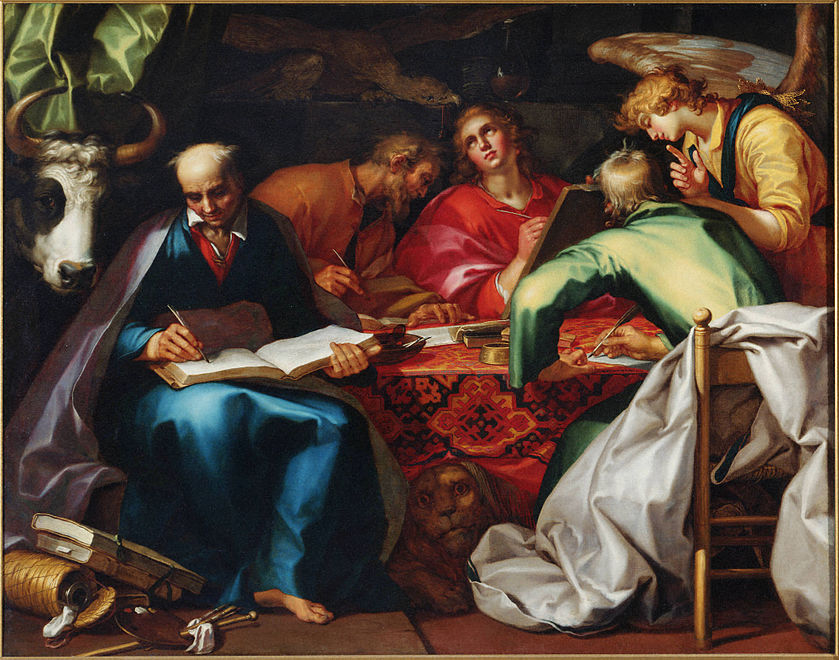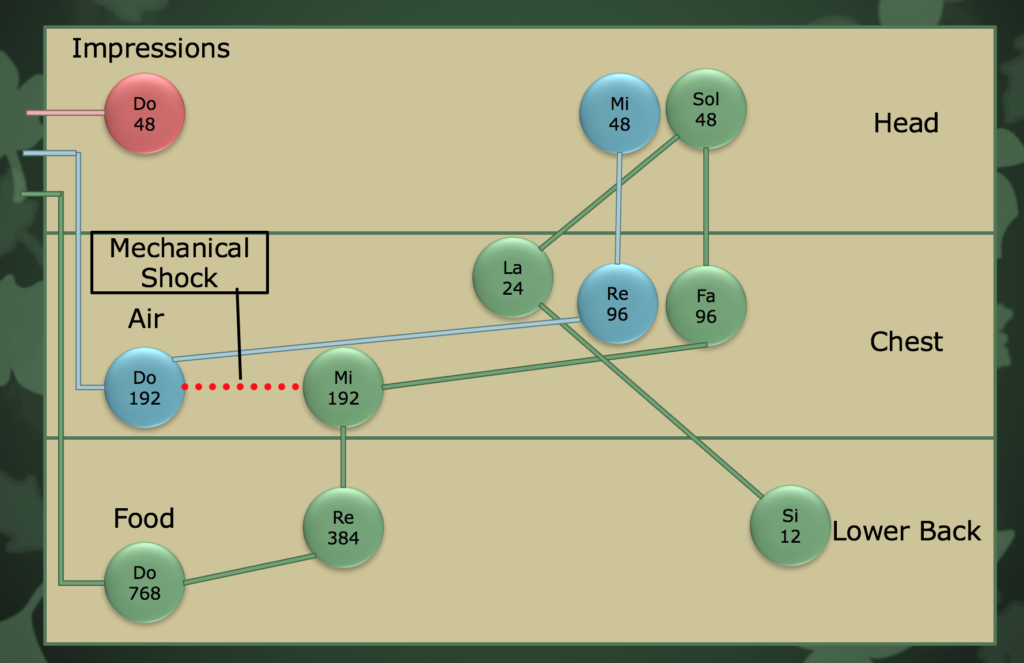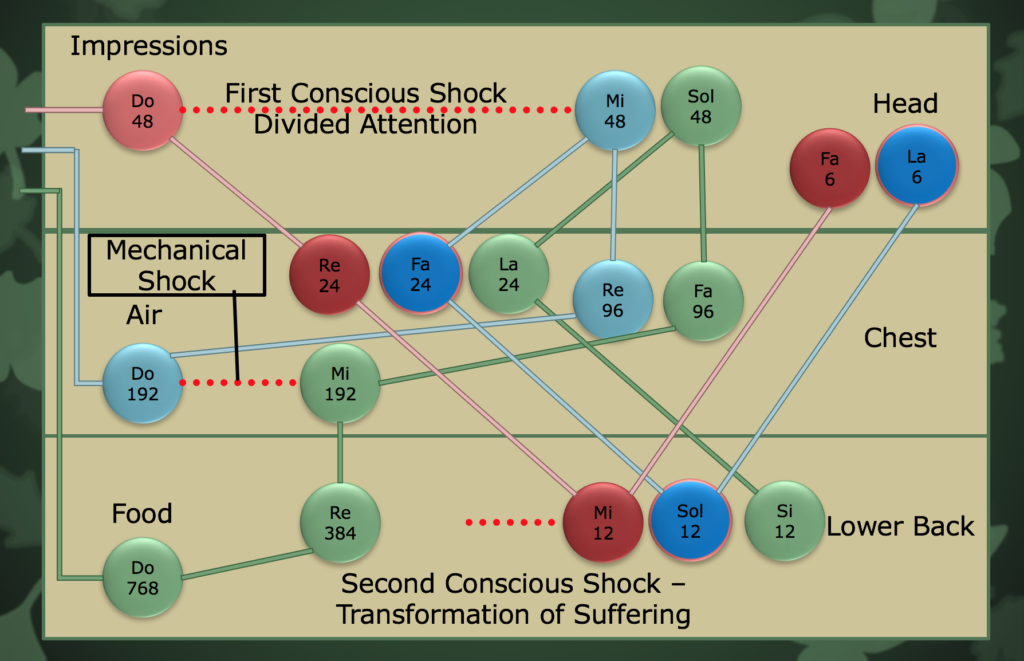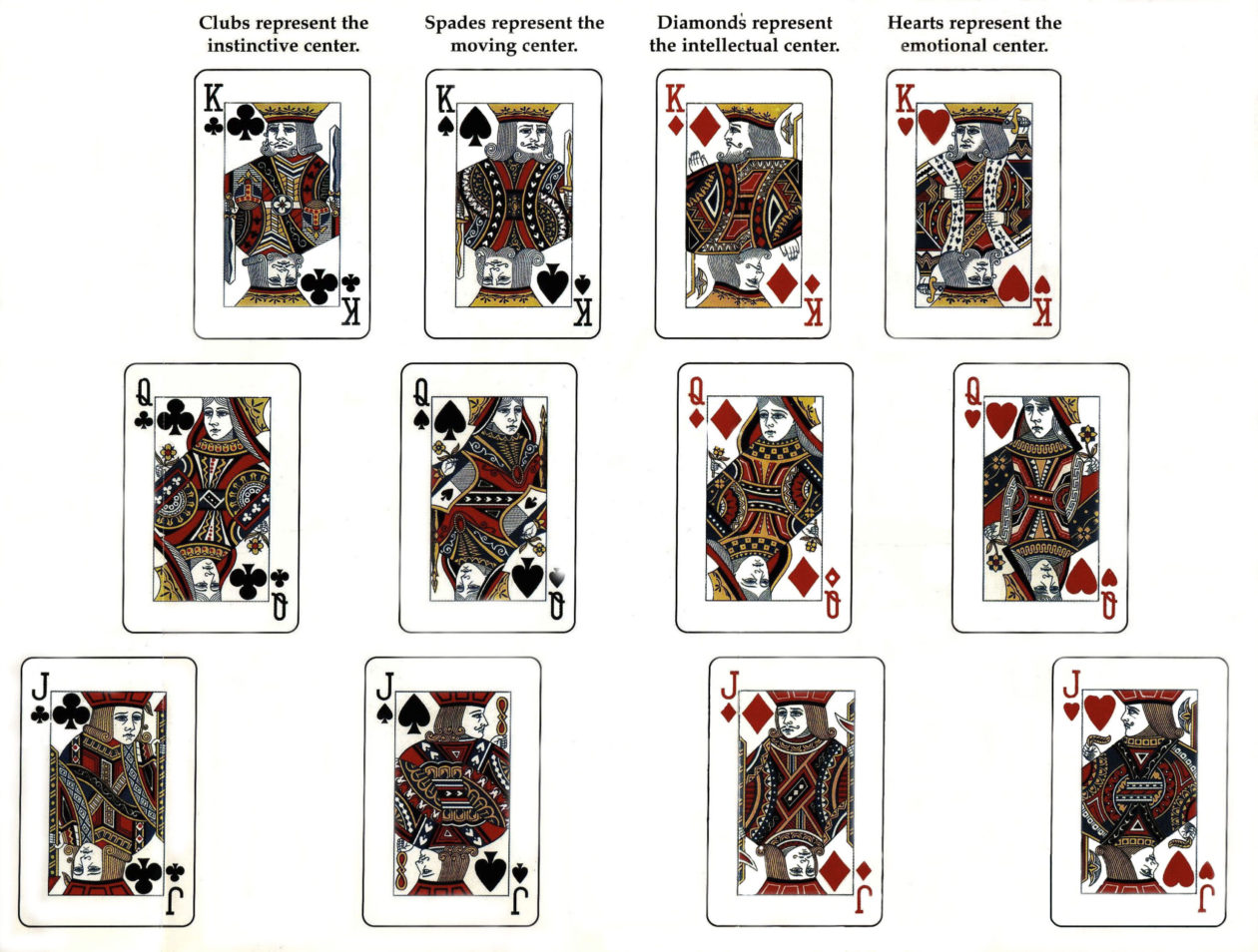The lower centers of the human body
The Fourth Way concept of the four lower centers is a specific tool that has a surgical precision. Man has four different brains, or centers: an emotional, intellectual, moving and instinctive brain. Because the moving and instinctive centers work with the same speed and energy, we can take them as one.
When used in connection with self-remembering, this idea shows where the many I’s come from. It can also show that they are not real, and that one’s true identity is separate from them.
The Fourth Way further divides each of the lower centers into three parts: a mechanical part, an emotional part, and an intellectual part.
The mechanical part works almost automatically; it requires little attention. But because of this it cannot adapt to a change of circumstances, and continues to work in the way it started, even when circumstances completely change. The work of the emotional part often takes our full attention. But in this part of a center, attention does not require any effort. It is attracted and held by the subject itself, very often through identification, which usually is called ‘interest,’ or ‘enthusiasm,’ or’ passion.’ The intellectual part of the intellectual center includes in itself a capacity for creation, construction, invention and discovery. It cannot work without attention, but the attention in this part must be controlled and kept there by will and effort. — Ouspensky, in The Psychology of Man’s Possible Evolution

Living in a mechanical world
Observing oneself from this point of view, one starts to see that one lives life mostly from the mechanical and emotional parts. The intellectual parts are not often active. When they are, it’s because an outside force, such as one’s job or studies, requires focus.
Awakening depends on using the intellectual parts; beginning and sustaining self-awareness depends on the intellectual parts. When one functions from the mechanical parts one is on ‘automatic pilot’.
For example, after arriving home, the jack of spades (the mechanical part of the moving center) puts down one’s keys. Because attention is missing, one will not remember where one put one’s keys. Even if one has created the habit of always putting the keys in the same place, occasionally the jack of spades puts them in a different place.
This is a rather innocent example of how functioning from the jack of spades can create inconveniences. The more important implication is that, at the same time, the other jacks of centers are also on automatic pilot. The jack of diamonds (mechanical part of the intellectual center) and the jack of hearts (mechanical part of the emotional center) are also asleep. These create an endless chain of habitual associative thoughts turning round and round, which occur without self-awareness.
Emotional and intellectual parts of lower centers

In the image above, we can see the ox as representing the moving-instinctive centers; the lion, the emotional center; the eagle, the intellectual center; and the angel, the steward.
Since man is a stimulus-response machine, the emotional parts of centers often seek for some stimulus to become active. The energy in these parts of centers is more intense. The emotional parts of centers tend to give man the short-lived thrill he is looking for. These parts seek some vibrant but illusory feeling of being alive, in contrast to the mundane existence of the jacks. Examples are obsessively playing video games, loudly cheering on a favorite sports team, arguing, and indulging in negative emotions. Without the functioning of the queens, most people would experience their life as dull and uninteresting. However, these are just another way that the lower self creates a veil, preventing the appearance of the higher self.
Sustaining attention through will and effort
The functioning of the kings of centers (the intellectual parts of centers) depends on sustaining attention through will and effort. Using the kings of centers, one puts down keys with attention, so one remembers where they are. Only when one is able to sustain self-awareness can the higher self actually wake up and be present.
When the higher self is present, impressions enter one more deeply. One ‘digests’ the impressions for the first time.

We can regard impressions as all that which enters from the outside world through the five senses. Only these impressions may just reach us without affecting us internally in any way. Or they may enter us very deeply, their innermost meaning may be seen, and they may become transformed into intense emotion. — Rodney Collin, The Theory of Conscious Harmony
The digestion of impressions as food for higher centers
Digested food becomes fuel for the body. The transformation of impressions is fuel for higher centers, enabling them to become active and sustain their presence.

When one functions from the jacks of centers, without paying any real attention to impressions, they only enter one superficially. When impressions are digested, they connect with one’s experiences, often resulting in some new understanding. This understanding has a more refined energy than the original impression. Simple everyday things suddenly inspire one and become full of meaning and emotion.
A fool sees not the same tree that a wise man sees. — William Blake
When a baby is born, impressions enter very deeply. A baby appears open to its higher centers, though it has no ability to understand or be aware of this. Yet this energy, of impressions deeply received, rubs off on people around the baby. It is one reason people often experience a sense of the miraculous when they have a newborn baby.
As months pass, slowly but surely, the activities of the lower centers begin to block the presence of higher centers. As a child grows up, new experiences or shocks do occasionally activate higher centers, enabling a vibrant, lively energy. But for most adults, higher centers appear rarely and the experience of vibrant energy happens less and less.
Digesting impressions consciously
However, when one fully digests or transforms impressions through self-remembering, higher centers return. For a minute one feels young again. Even when the higher state subsides, the vibrant energy resonates in one’s being for a while.
This is the eternal fountain of youth. No external mythical spring, but a state of consciousness in which one’s higher centers, one’s higher self, is wide awake. There is no greater contentment or miracle than this.
Walther Sell has been a student of the Fourth Way for decades. He is the author of a website on Oriental esoteric teachings, Inner Journey to the West.
See other articles by Walther for the FourthWayToday.org, including:
